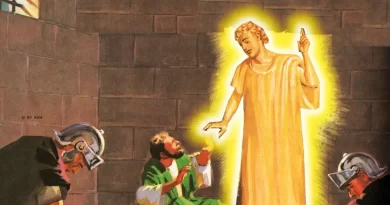Story of parable of a lost sheep – एक खोई हुई भेड़ के दृष्टांत की कहानी
The Parable of the Lost Sheep is a well-known story told by Jesus, recorded in the Gospels of Matthew (Matthew 18:10-14) and Luke (Luke 15:3-7) in the New Testament of the Bible.
Jesus is addressing a crowd, including tax collectors and sinners, and the religious leaders, the Pharisees, are grumbling about Jesus associating with those they considered to be “sinners.”
Jesus begins the parable by asking a rhetorical question: “If a man has a hundred sheep and one of them goes astray, will he not leave the ninety-nine on the mountains and go in search of the one that went astray?”
In response to his own question, Jesus continues the story, describing how the shepherd leaves the ninety-nine sheep in the open country and goes in search of the one that is lost.
When the shepherd finds the lost sheep, he joyfully puts it on his shoulders and returns home. He then calls together his friends and neighbors, saying, “Rejoice with me, for I have found my sheep that was lost.”
Jesus concludes the parable by making a spiritual application, stating that there will be more joy in heaven over one sinner who repents than over ninety-nine righteous persons who need no repentance.
The Parable of the Lost Sheep conveys the message of God’s love and concern for every individual. The ninety-nine sheep represent those who are already righteous and in a relationship with God, while the lost sheep symbolizes the sinner who has strayed. The shepherd’s willingness to leave the ninety-nine and search diligently for the one that is lost illustrates God’s desire to seek and save those who are spiritually lost.
This parable is part of a series of parables in Luke 15, including the Parable of the Lost Coin and the Parable of the Prodigal Son, all emphasizing the joy in heaven when a lost sinner repents and returns to God.
Story of parable of a lost sheep – एक खोई हुई भेड़ के दृष्टांत की कहानी



